Terrible Terry is a professional capstone game made using Unity with its XR plugins and developed for PCVR for a Meta Quest 2.
Made during my time at Sheridan College's, Honours Bachelor of Game Design Program with two semesters of dedicated development time (8 Months) with a team of five along with the guidance of our professors.
The main goal for the project was to make a complex game with a small team and eight months of dedicated developmental time starting in September 2024 where it would be ready to be featured in Toronto's April 2025 Level Up Showcase.
My main role in Terrible Terry was as it's sole level designer, although the whole team including myself worked on a variety of other tasks.
______________________________________
- Project Information -
Steam Release Coming Soon
Production, Game, and Level Design Project.
Professional Group Project.
Dedicated 7 Month Development Time
2025.
Check out the trailer and Itch.io page below!
_______________________________________________
- Initial Ideas and Concepting -
Terrible Terry was initially going to be a very different game from what it is now, and the idea for having a VR capstone project began with talks in the previous academic year. With both me and another one of my team members having an understanding that our capstone projects are an opportunity to experiment and do something that we might not have another chance to. With VR we knew we would have some challenging design problems to solve, but that was also something that drew us towards the direction of a VR game.
We researched into VR games before pre-production began, focusing on what made a fun and compelling VR game. We found that the use of physical actions, players using their arms, and games that utilized more of the VR headset capabilities unique to that medium, were the games that players found the most appealing in the VR space.
The first versions of Terrible Terry were loosely inspired by 'Davigo', an asymmetrical VR title where one player is using a VR headset, and up to 4 others on a desktop in a versus against the VR player. Terrible Terry was going to be one person in VR as “Terry”, driving a car through a town with up to four players on their mobile devices fighting in a top-down view to stop “Terry” from wreaking havoc. This idea was scrapped fairly early on as we lost our network programmer and were down to five team members.
To descope afterward, we decided to shift our effort and redesign the game to be focused on the actual VR element of the game and shift to a single player experience, still focusing on destruction and driving a car. While it took some time to redesign the core gameplay loop, not much had been implemented in the engine aside from a basic car controller, a VR player controller, and a mobile player controller, so luckily we avoided having to remove a lot of in engine work thus far.
Below you can find some of the interactions we designed as a team for how mobile players would be able to use and sabotage the car, as well as a very basic first pass on a level design. Diagrammed by me for our documentation and for our programmers to work with.

GOD Beam Ability

Mine Ability

Baby Bomb Ability (This made it to final game!)

Wall Ability

COW Missile Ability

Avalanche Ability
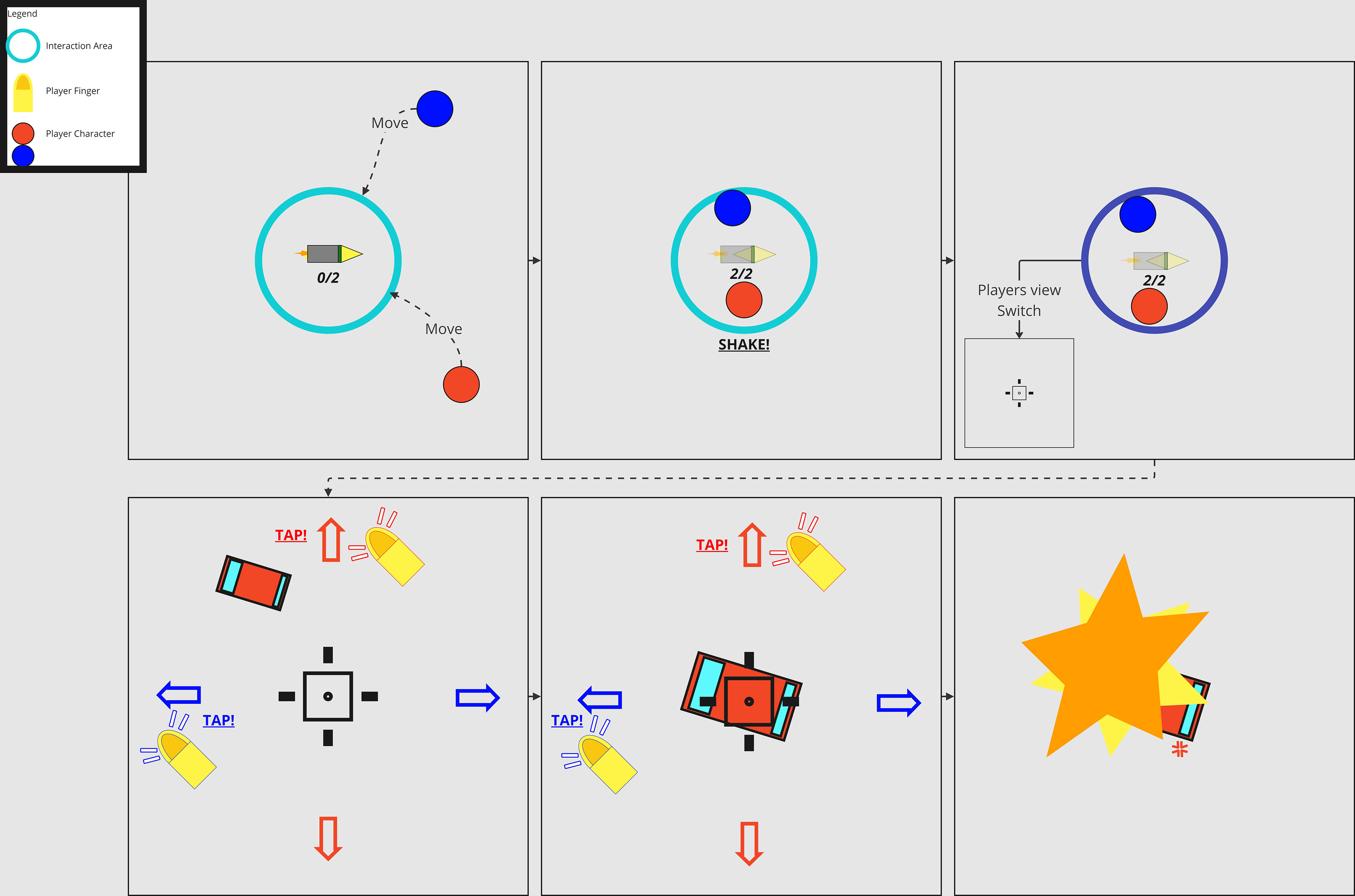
ICBM Ability
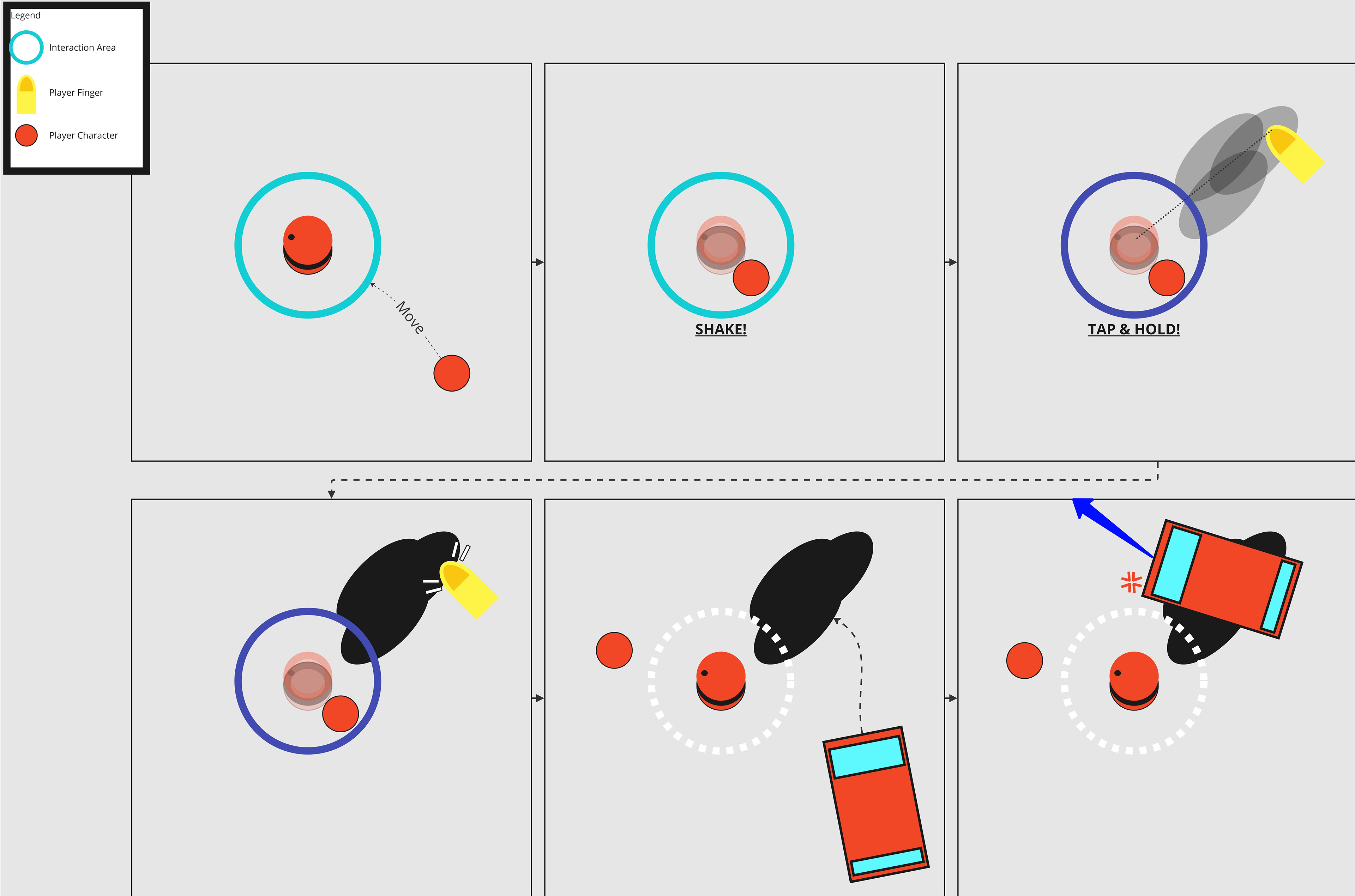
Oil Slick Ability

School Bus Launcher Ability

Early Level Design Concept
- Road to MVP -
For our MVP (Minimum Viable Product), we successfully were able to focus on the VR driving aspects of our original design and implement a small level as well as the beginnings of the larger systems we wanted to have, such as road signs, and an aptly named “landmark” system. The majority of the redesigns made had to be with the level design and player win condition, now that there were no multiplayer components. This resulted in the creation of the landmark system. Essentially, instead of having one central area that the Terry player was destroying, which felt more like a directionless sandbox at the time, we needed to guide players more with the level pacing into separated areas the team dubbed “landmarks”. Now the player goal was simply 'Destroy all the landmarks', and we had opened the opportunity on our end to design the level around having road networks that guide players into separated landmark areas.
Below are images for the first pass with the terrain tiles in Unity, which eventually lead to a more refined layout once we had solidified our art themes in the MVP

First pass on a 4km^2 terrain area
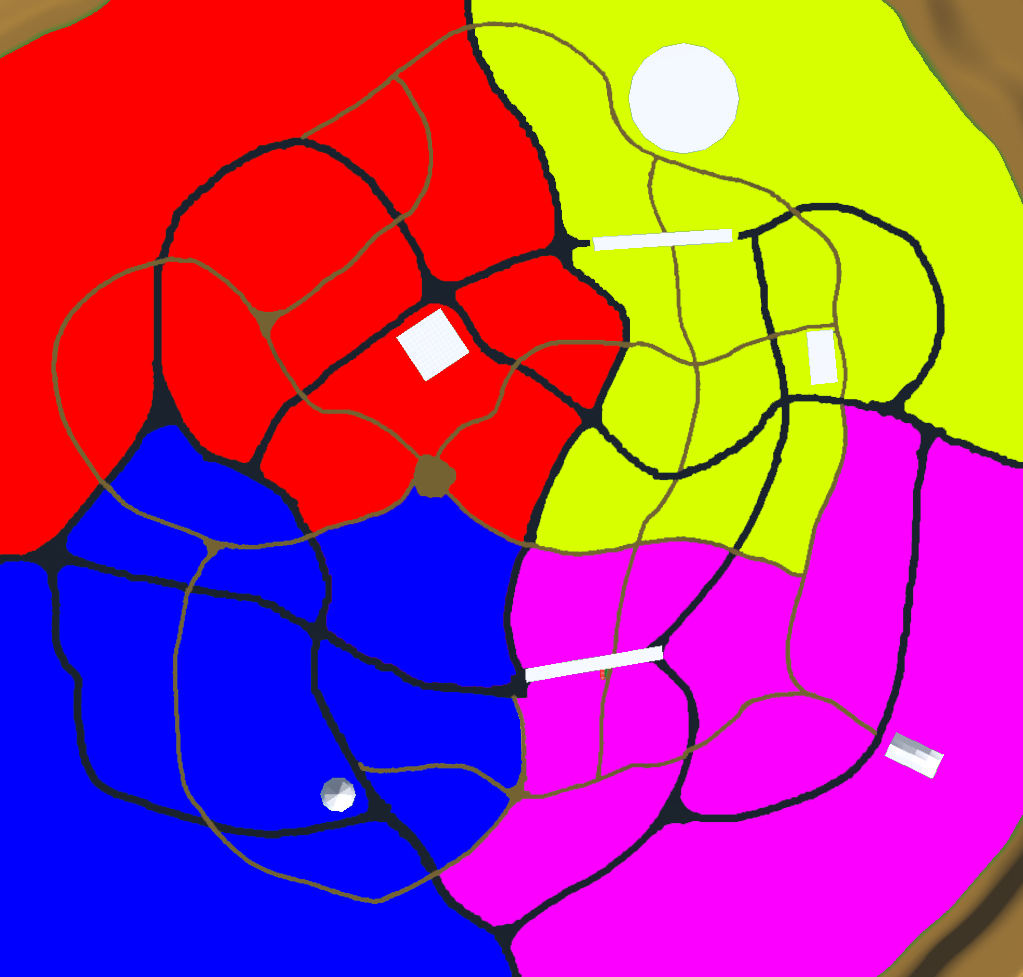
Initial zone planning for having 4 unique landmarks

Top Down of Our MVP map and possible future plans for expansion
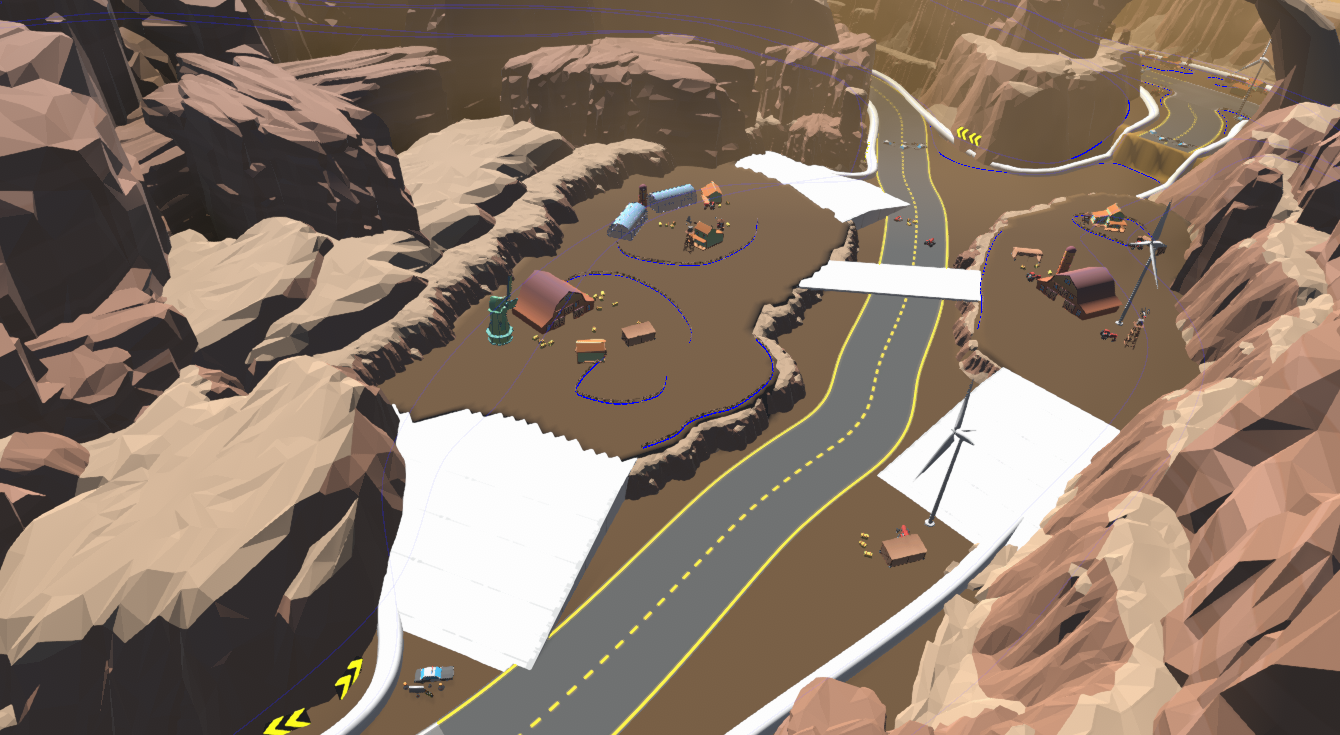
The First landmark area in MVP
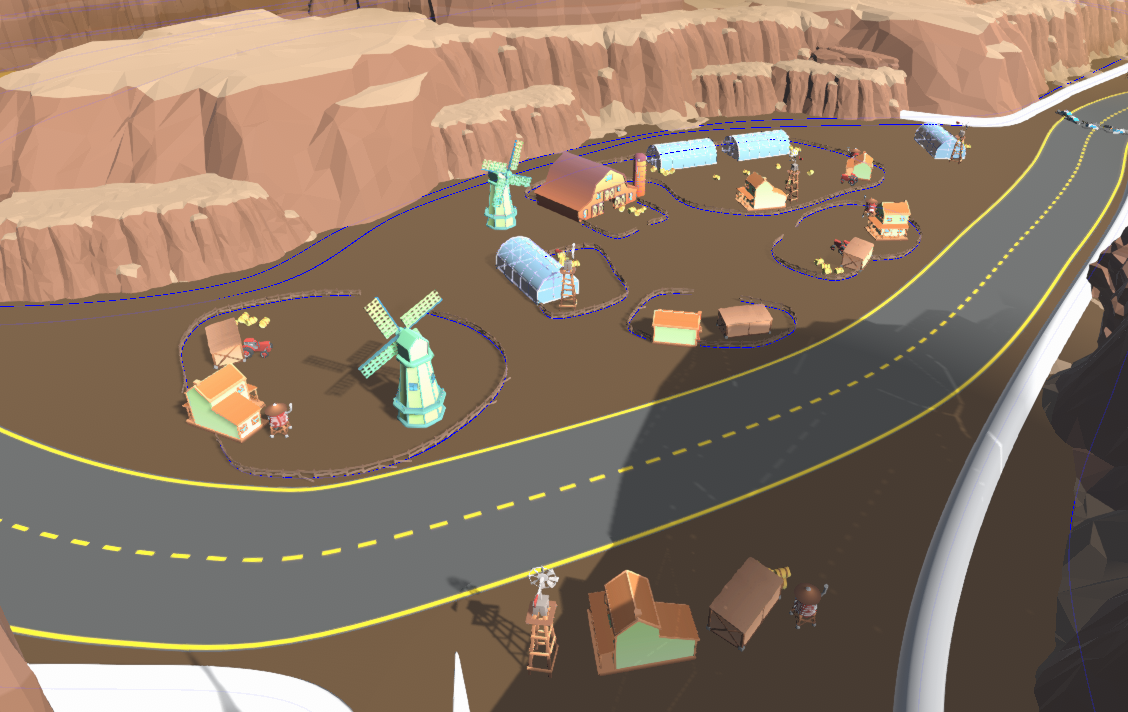
Second landmark area in MVP
- Production -
After the Christmas break, production and implementation began on the project, and this is where most of our iteration for level design occurred over the course of the final 4 months. The first round of playtesting with other people outside the team with the level above made it a lot more clear what we had to focus on for levels in the future. Players were having some navigational issues with the landmarks being too small and not a lot of room to drive inside. This made it hard to differentiate between the roads and when you entered a landmark where players needed to destroy buildings. We decided that adding directional arrows along roads that lead to the nearest landmark would help the player find where they need to go.
For the next iteration of the level, seen below, we expanded the level and made landmark areas much larger as a result, before testing began again.

View of the newly expanded area
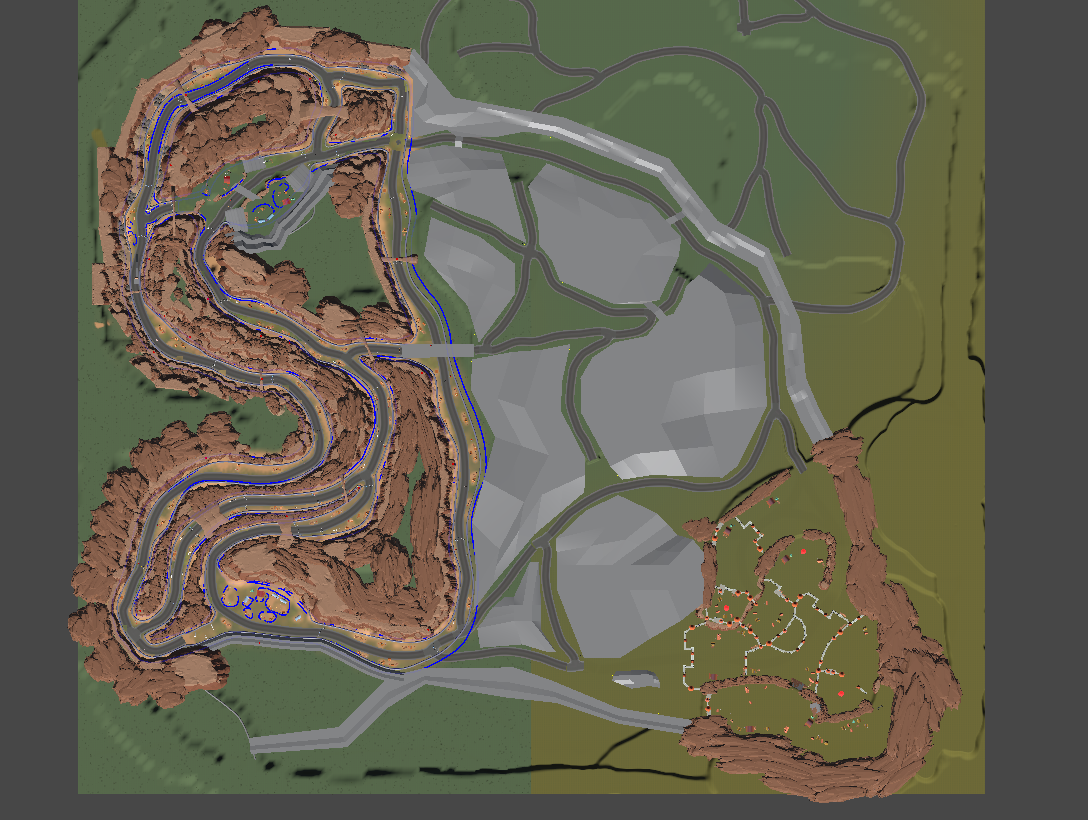
Top down view of level
In the next round of playtests, players were no longer having problems driving inside landmarks, but still had some issues finding them. We were still working on our onboarding process at this point. Nonetheless, we iterated further and did a lot more internal testing, ensuring that the game was being played regularly by everyone on the team and giving feedback about how we can improve.
In the next iteration of the level, see image below, we got rid of the majority of roads that were deemed unnecessary as we wanted to start solidifying some designs. We decided we were going to have three landmarks, and brought the landmark, pictured above in the bottom right, closer to the rest of the space.
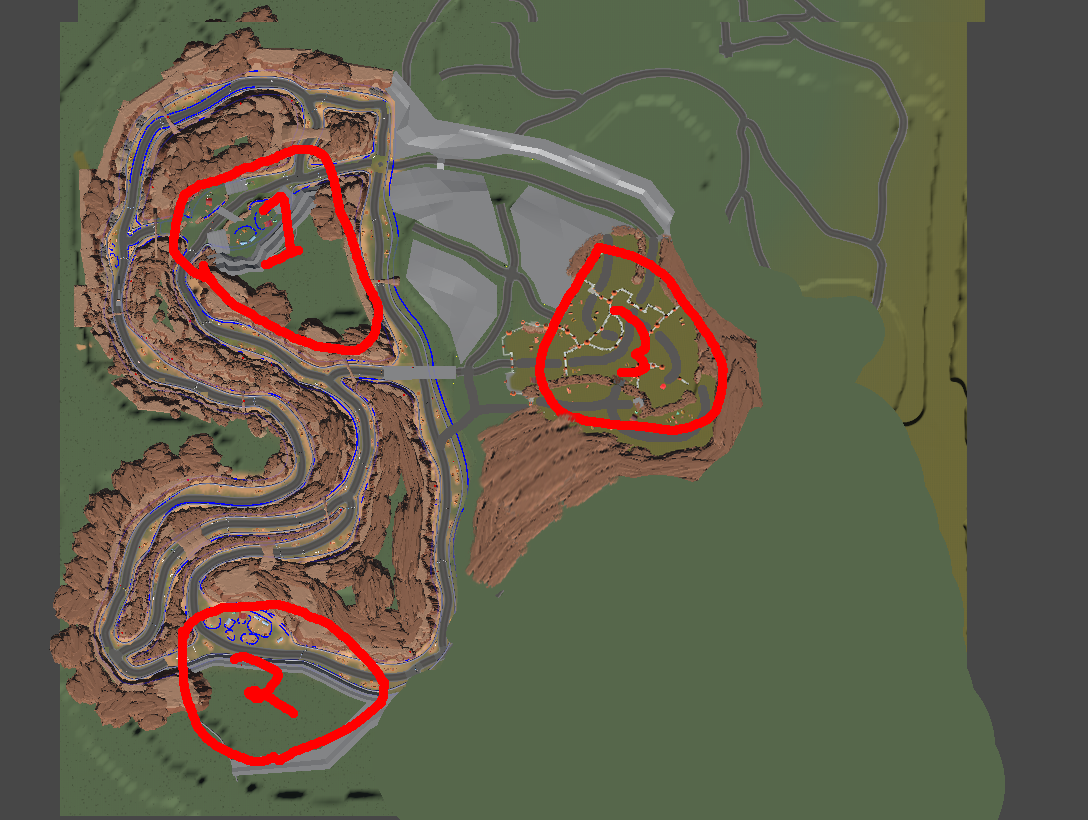
Top down view of 3rd map iteration
With a commitment to three landmark areas and the overall layout at this point, I was able to focus more on designing each individual landmark to have better layout and pacing and match other design decisions the team was making in terms of our gameplay goals. We wanted players to have the choice of where to go, but instead have a relatively linear path for players to follow within a landmark to take advantage of the space and guide players. We found that giving players too many options in driving was taking away from their focus in the car, and this is what guided the decision to guide players a lot more than was previously thought for.
In the next iteration, below are the earliest diagrams I put together for pacing players within the landmarks. The red line is the planned player path with the background of the image being the original, coloured areas were meant to indicate intensity levels, and all other markers are for sight lines and height variation. These eventually went through another round of iteration, as you'll read below
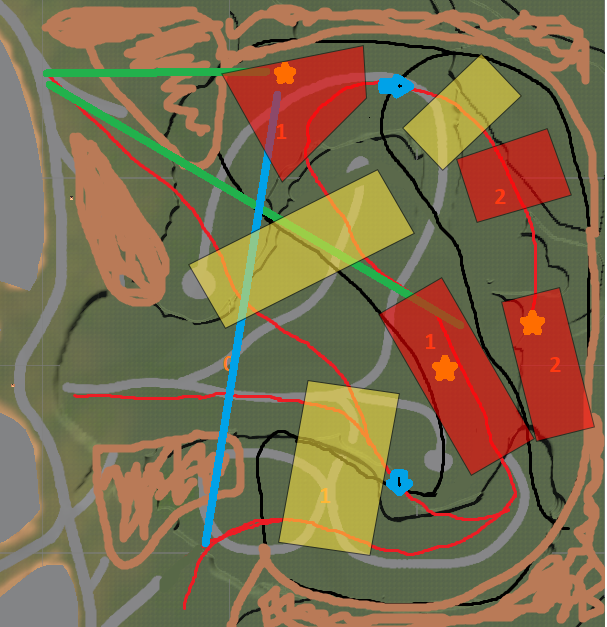
Castle Landmark Flow
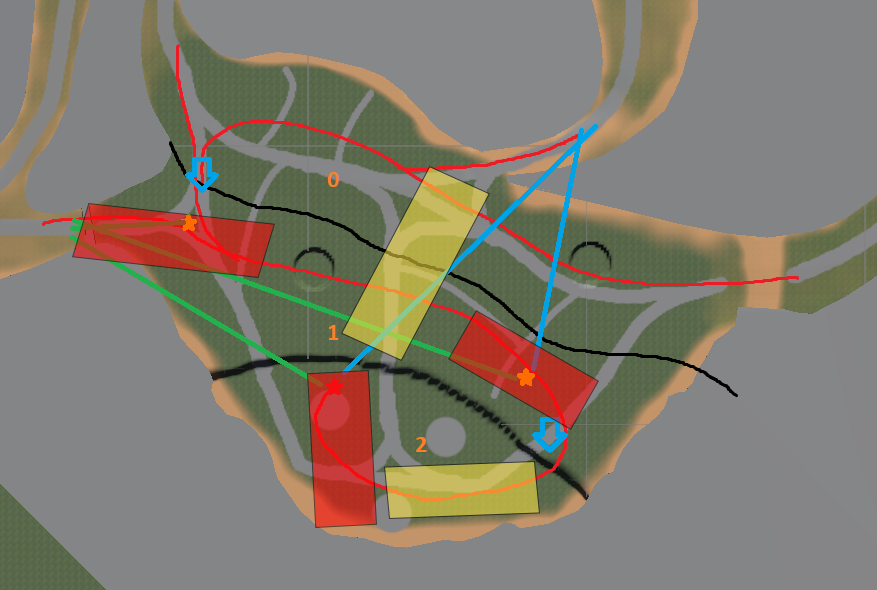
Nuclear Landmark Flow
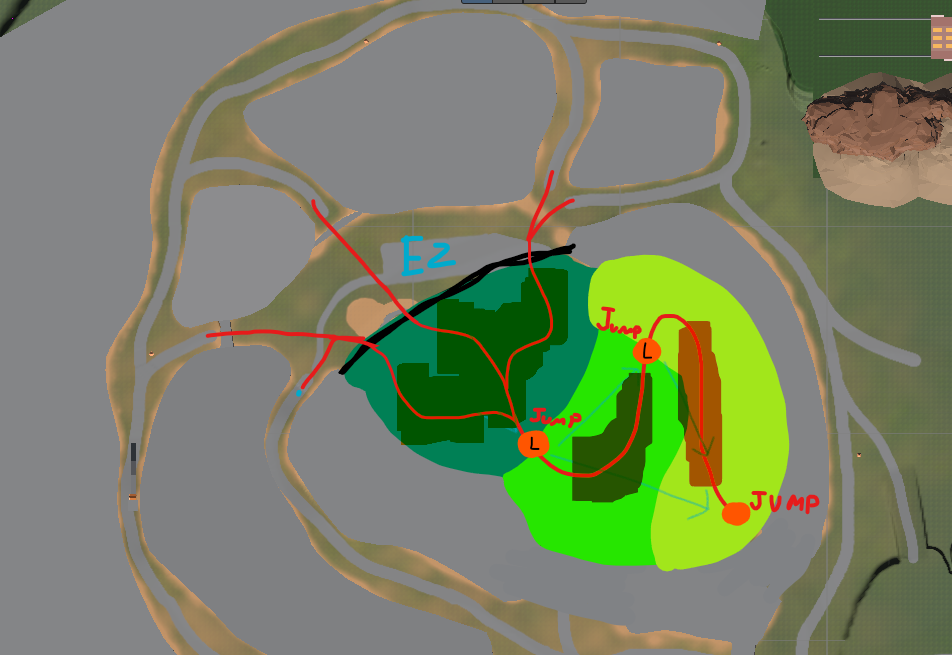
Zoo Landmark Flow
After the above redesigns to the landmarks, they still weren't quite meeting our gameplay goals in terms of player guidance, and so for the next version I redid much of the Castle and Nuclear landmark zones. We went with a single route through each area, albeit much wider. We also planned on gating off players once they entered a landmark to make it clear that they have an objective; “go destroy those red buildings, then you can leave.” This was eventually what our final versions of these spaces would look like, shown below, aside from minor tweaks to certify full functionality.

Zoo Landmark Layout

Nuclear Landmark Layout

Castle Landmark Layout
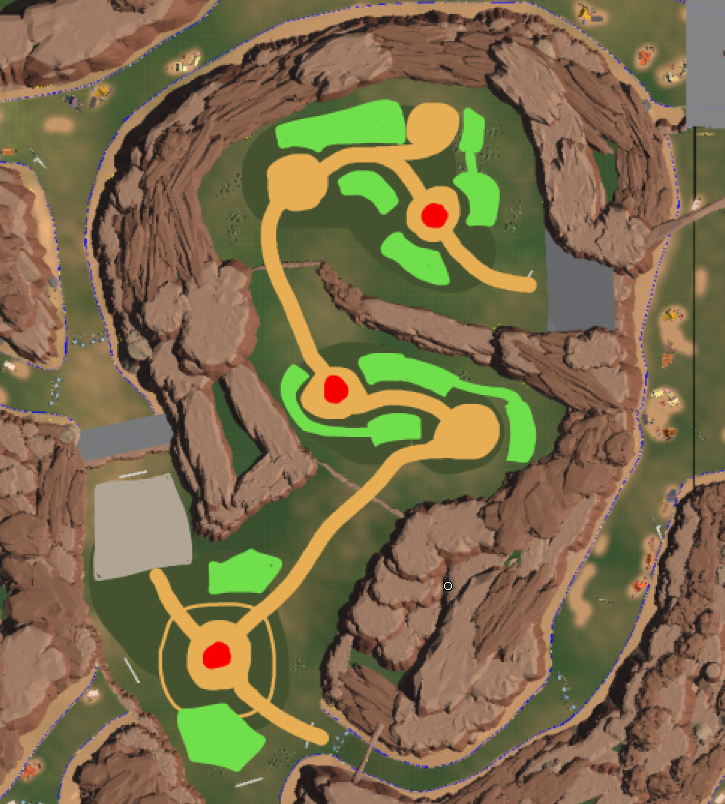
Zoo Drawn Roads

Nuclear Drawn Roads

Castle Drawn Roads
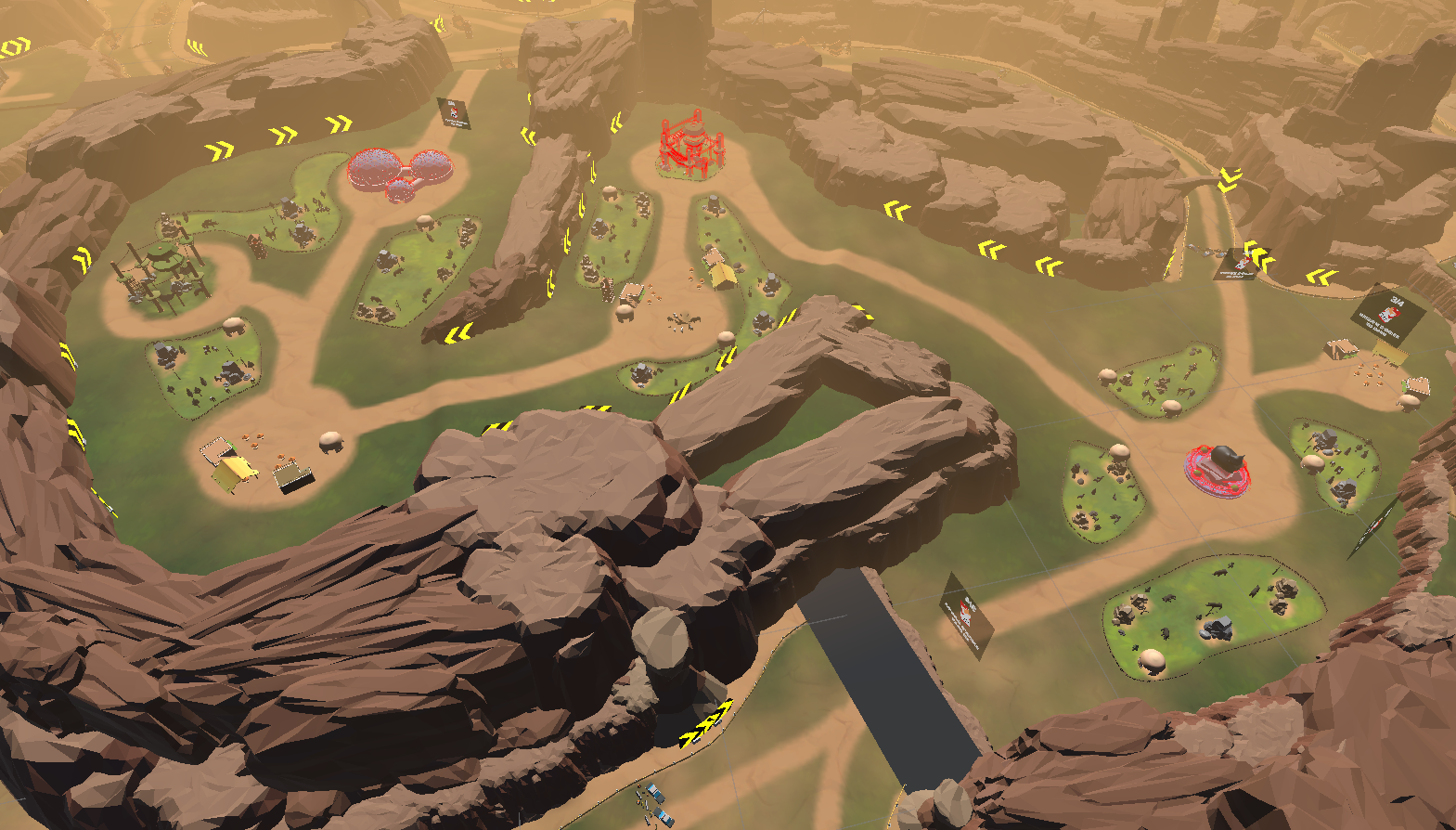
Final Version of Zoo

Final Version of Nuclear

Final Version of Castle
- Closing Thoughts -
This was one of the most exciting projects, and certainly the largest team project I had ever worked on. It was a fantastic project to be a part of and despite the many challenges we faced we were able to get a great game out of it. This project was the most complex VR title to be made in Sheridan Game Design ever (so says Prof. Dinath), and I am very proud of the work me and the whole team did.
Every player at Level Up 2025 thoroughly enjoyed the game, and if given the opportunity I hope to keep working on this game to make it even better than it already is. If you have a Quest 2 headset, definitely give it a try.
Shoutout to Kaleb, Lucas, Owen, Majed, Keagen, and all the professors who made this game what it is.
- Photo Gallery -

Our Level Up 2025 Booth. ft. Prof. Dinath and Prof. Crowell

Roadside Rampage
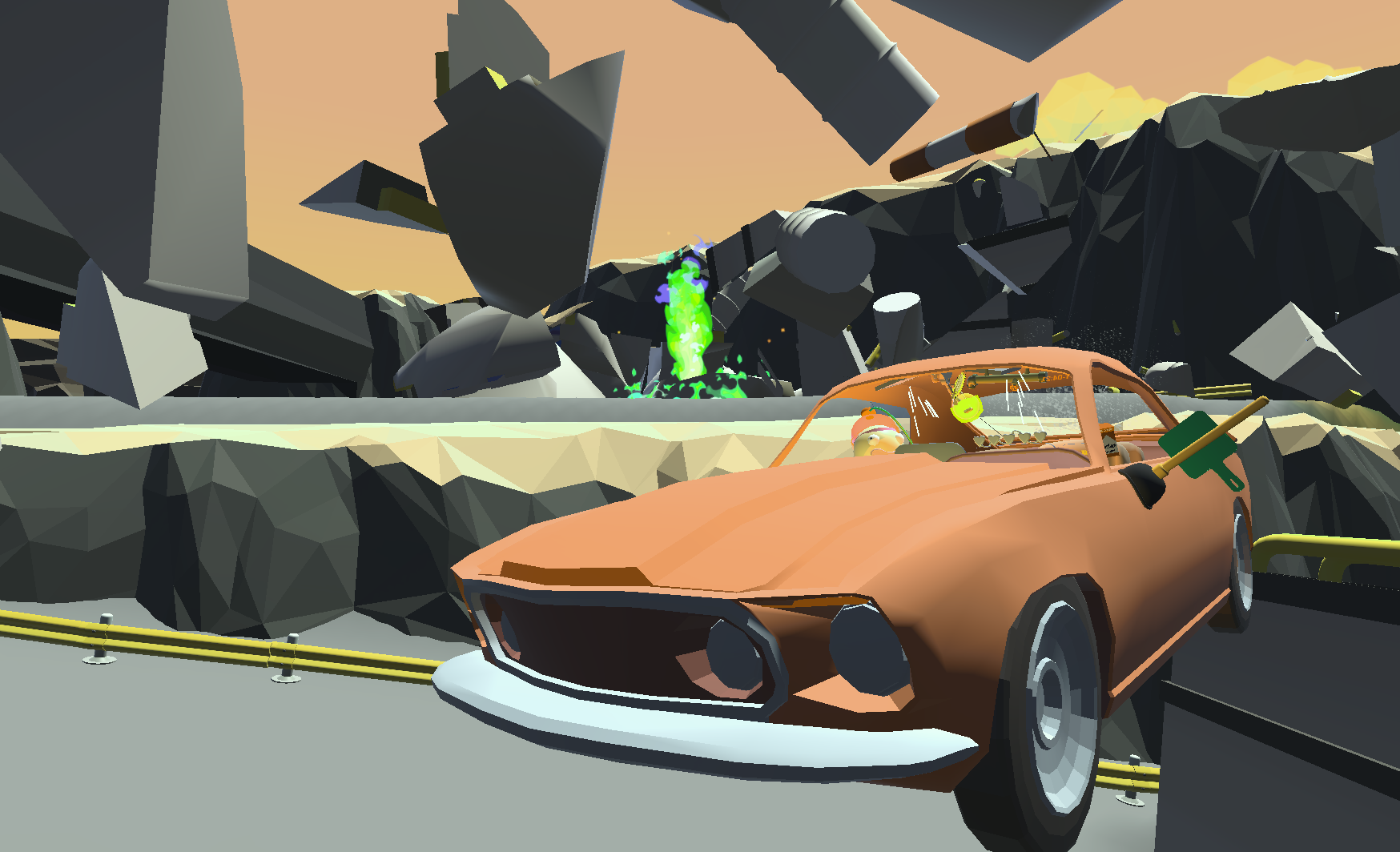
Nuclear Catastrophe
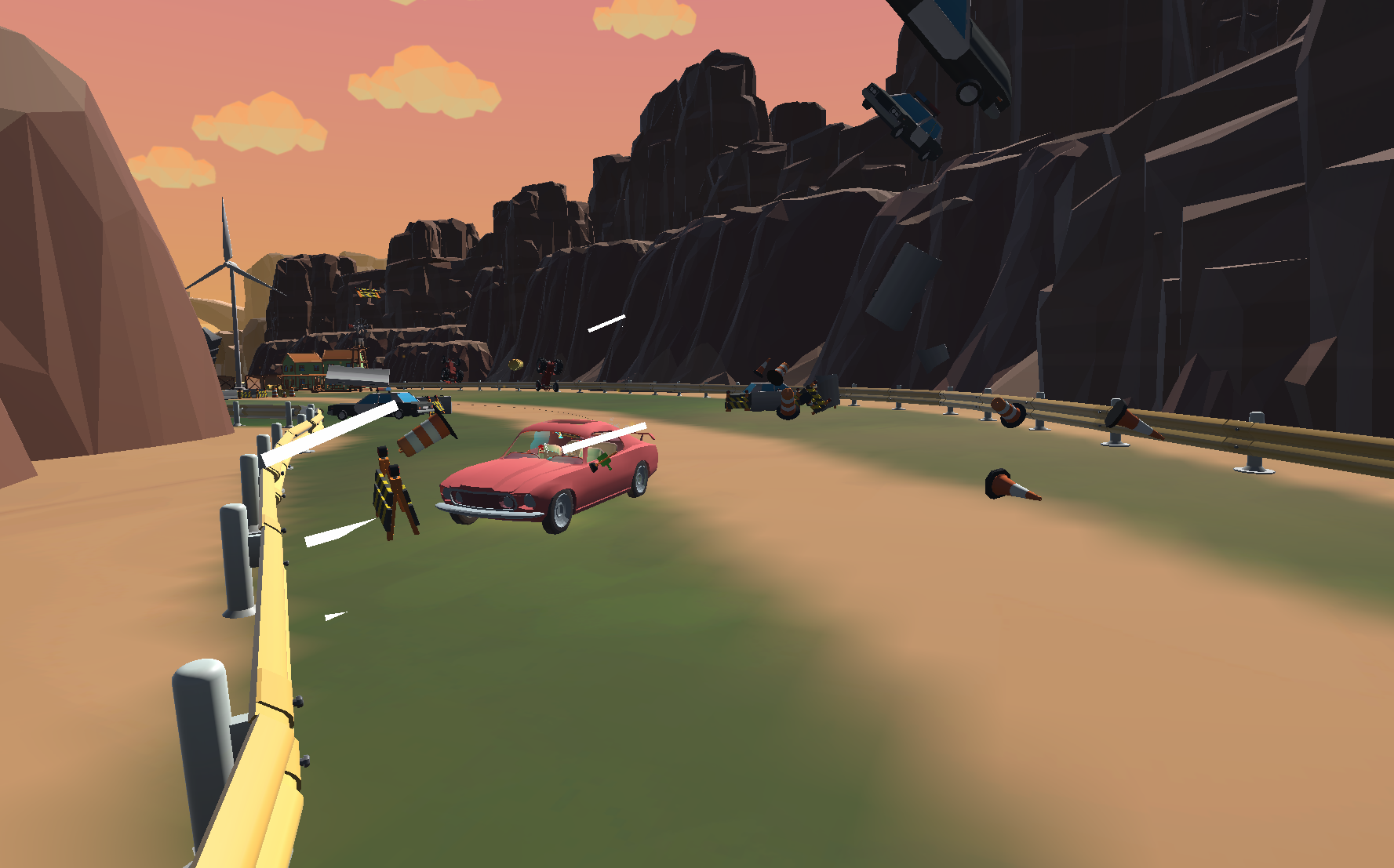
Cop Blockade
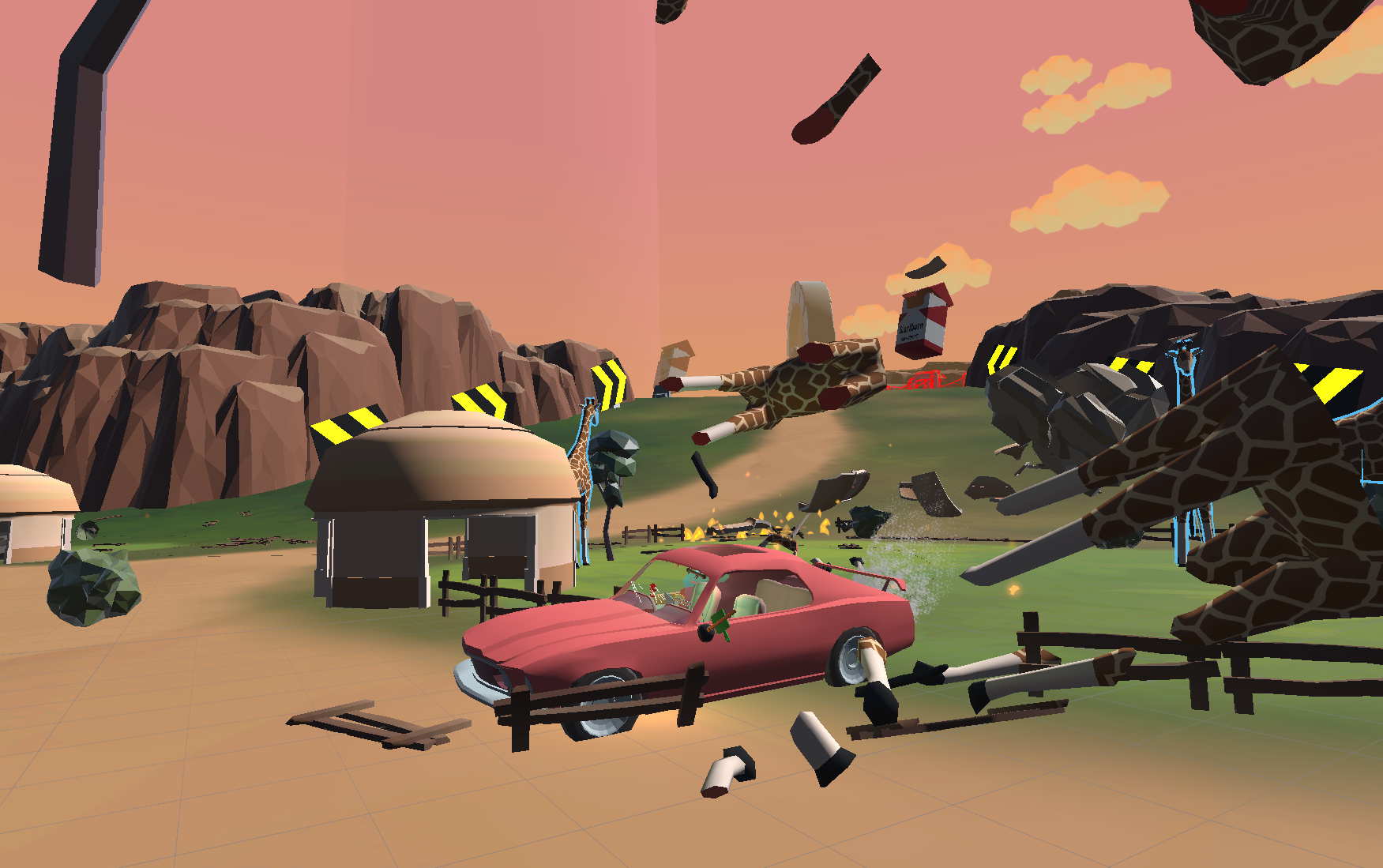
Zoo Chaos

Castle Wall Destroyed
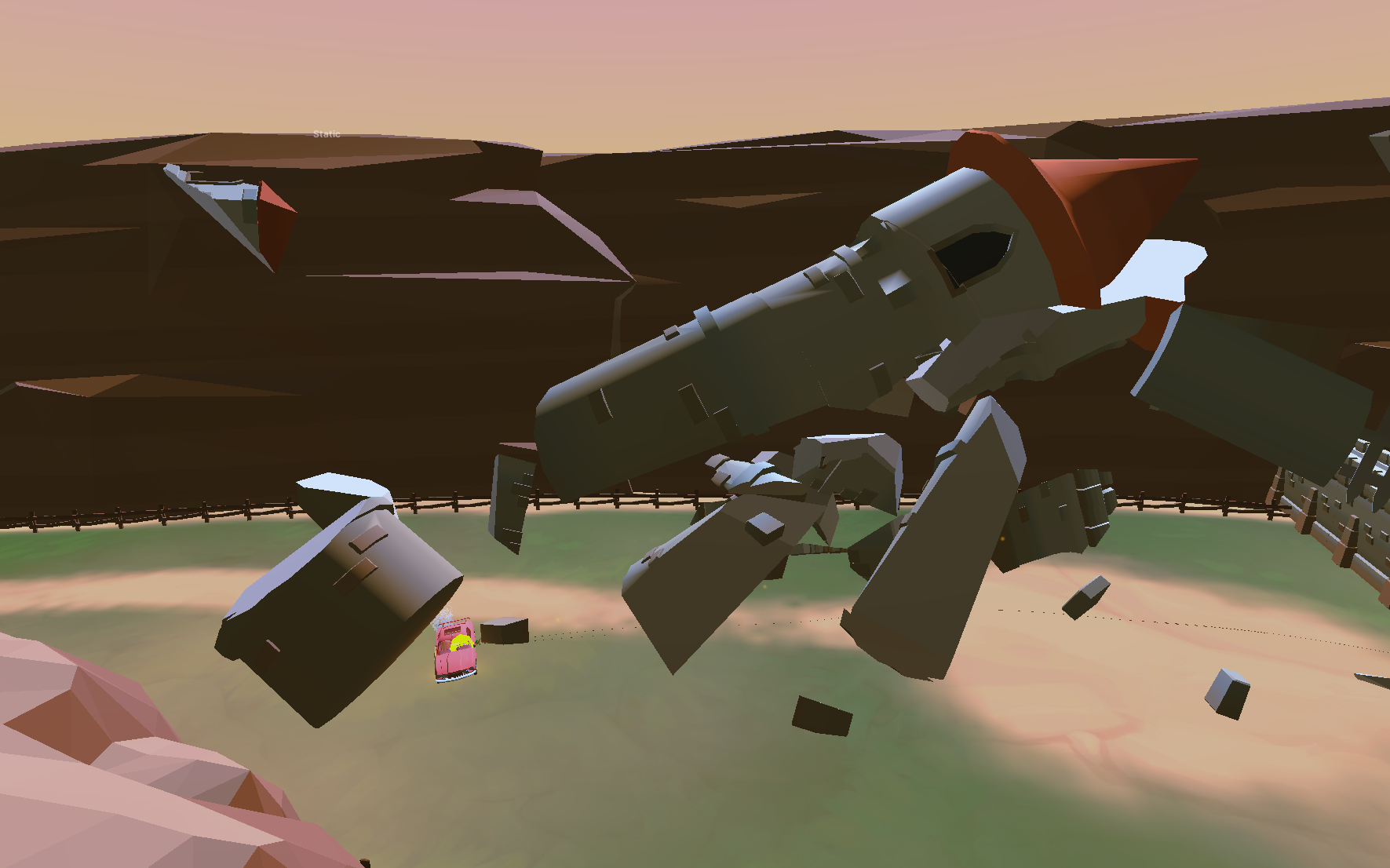
Falling Castle Tower

Splash Art with Team Logo

